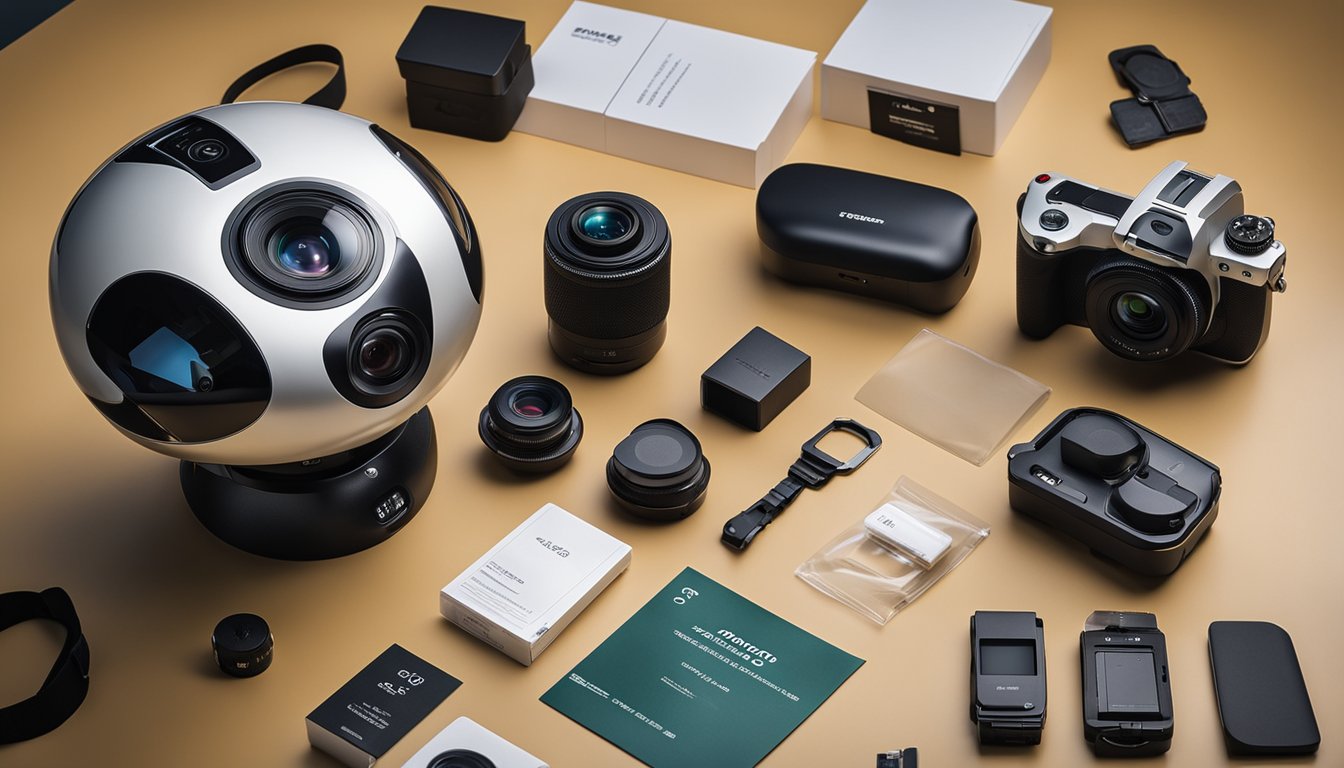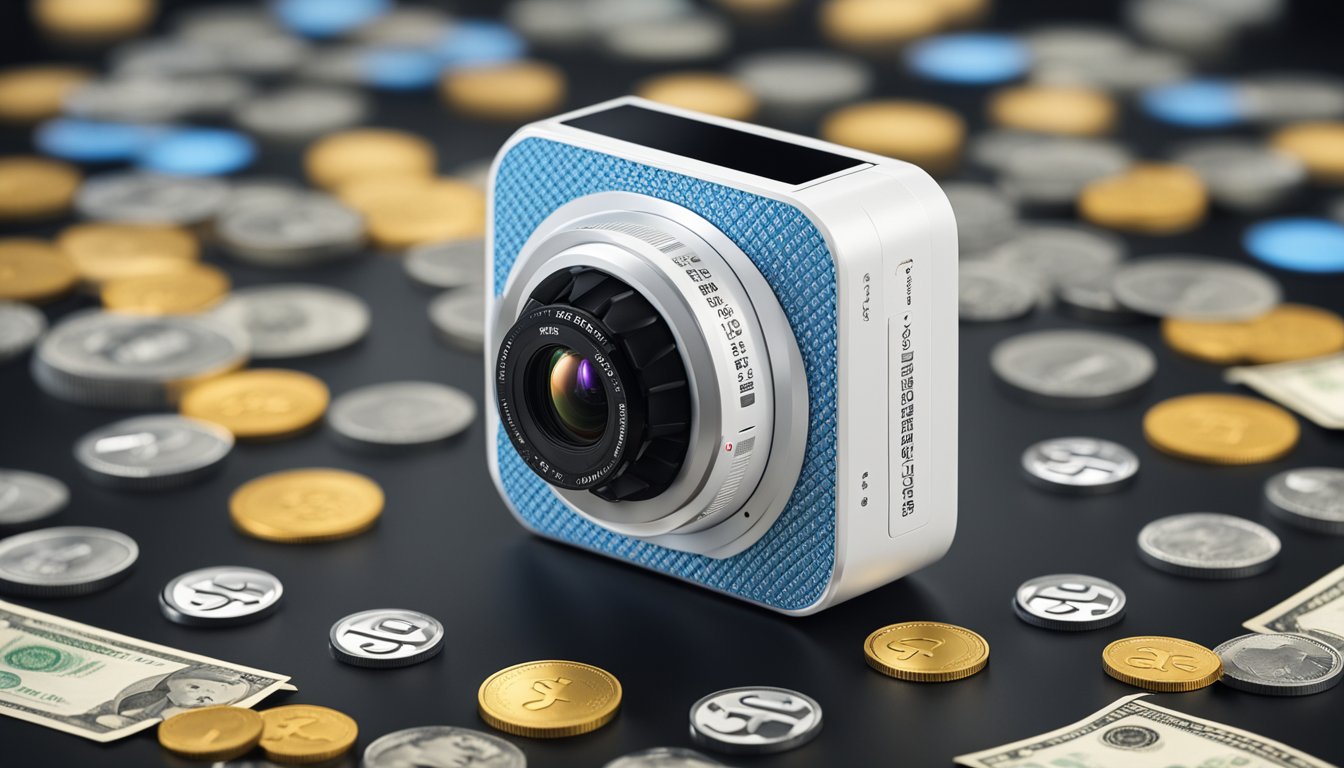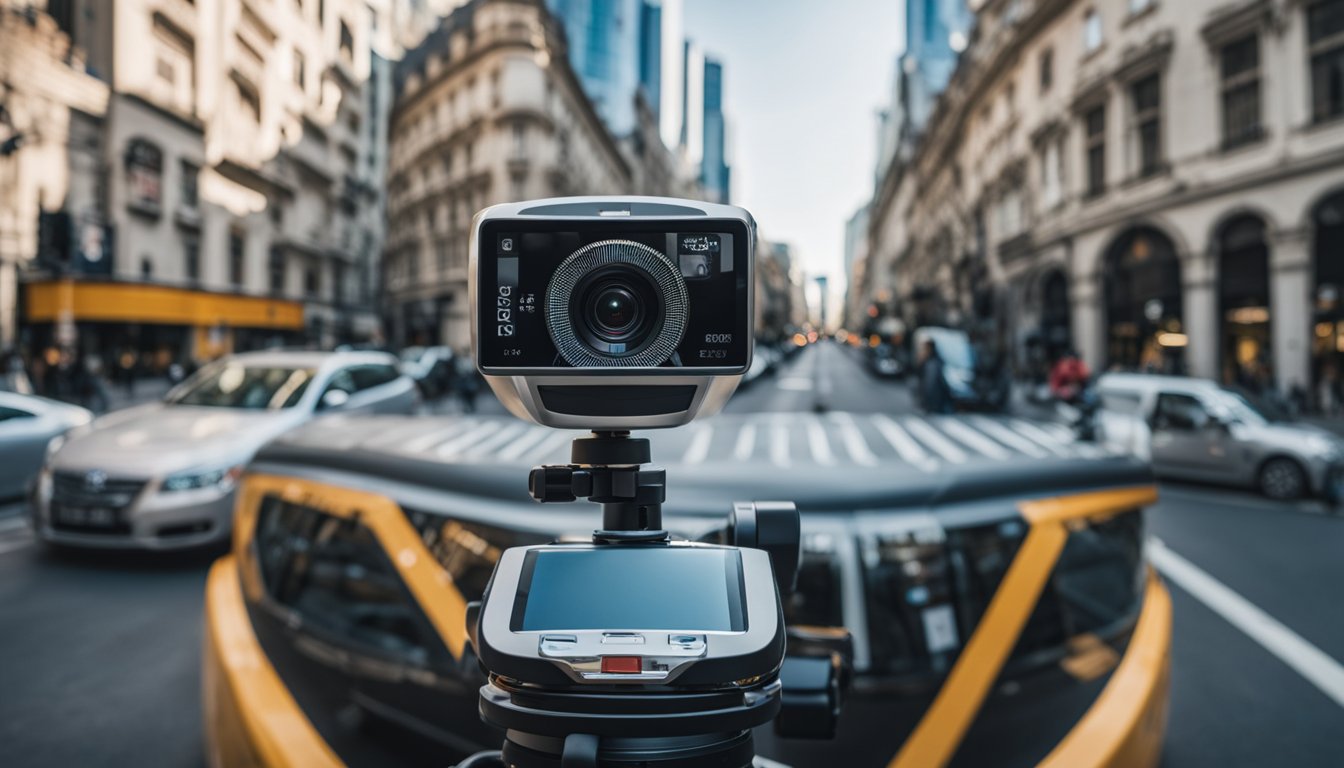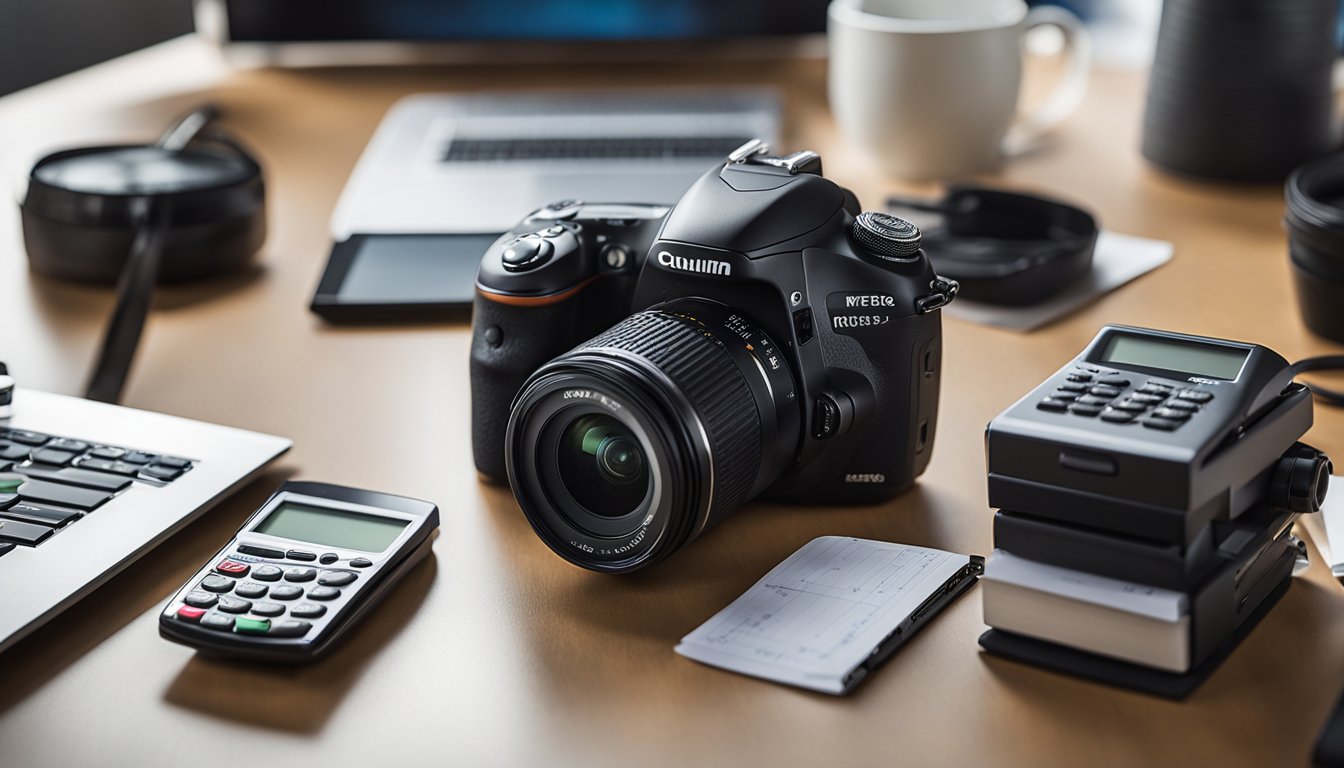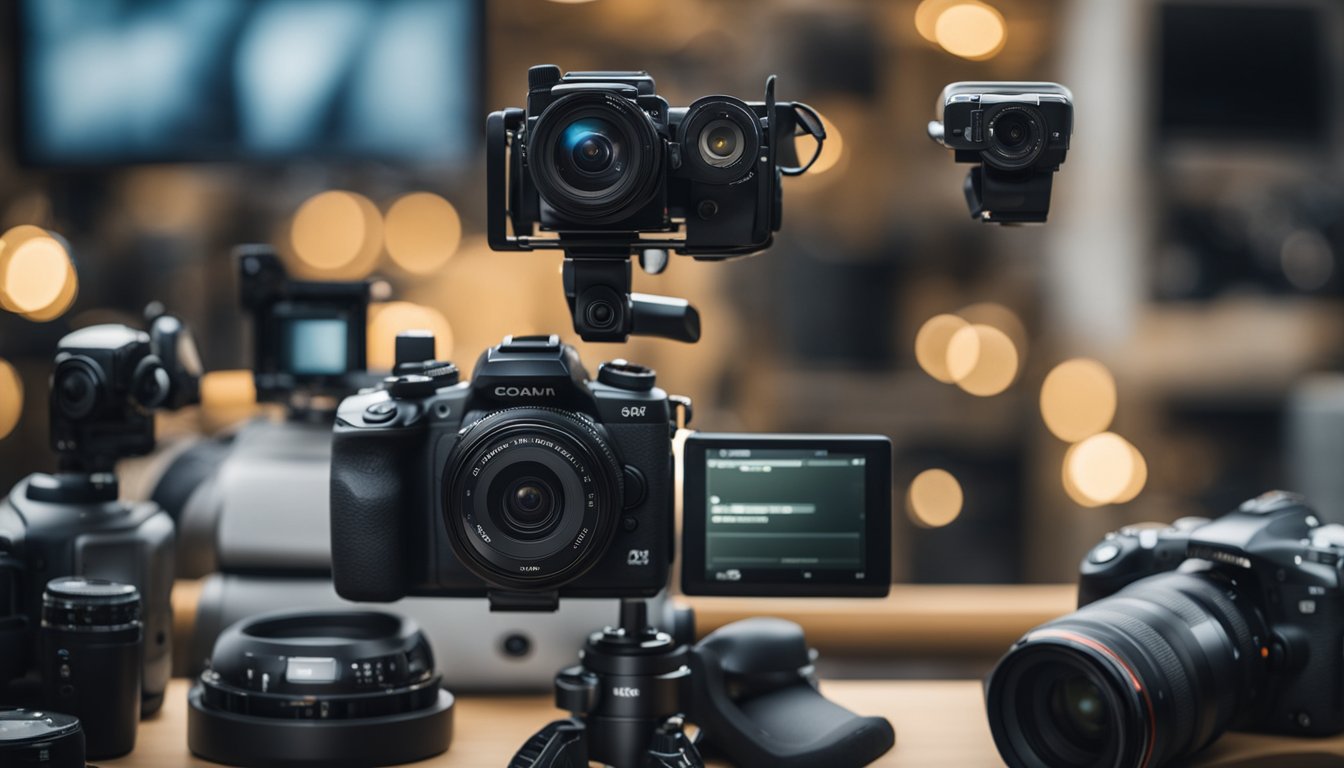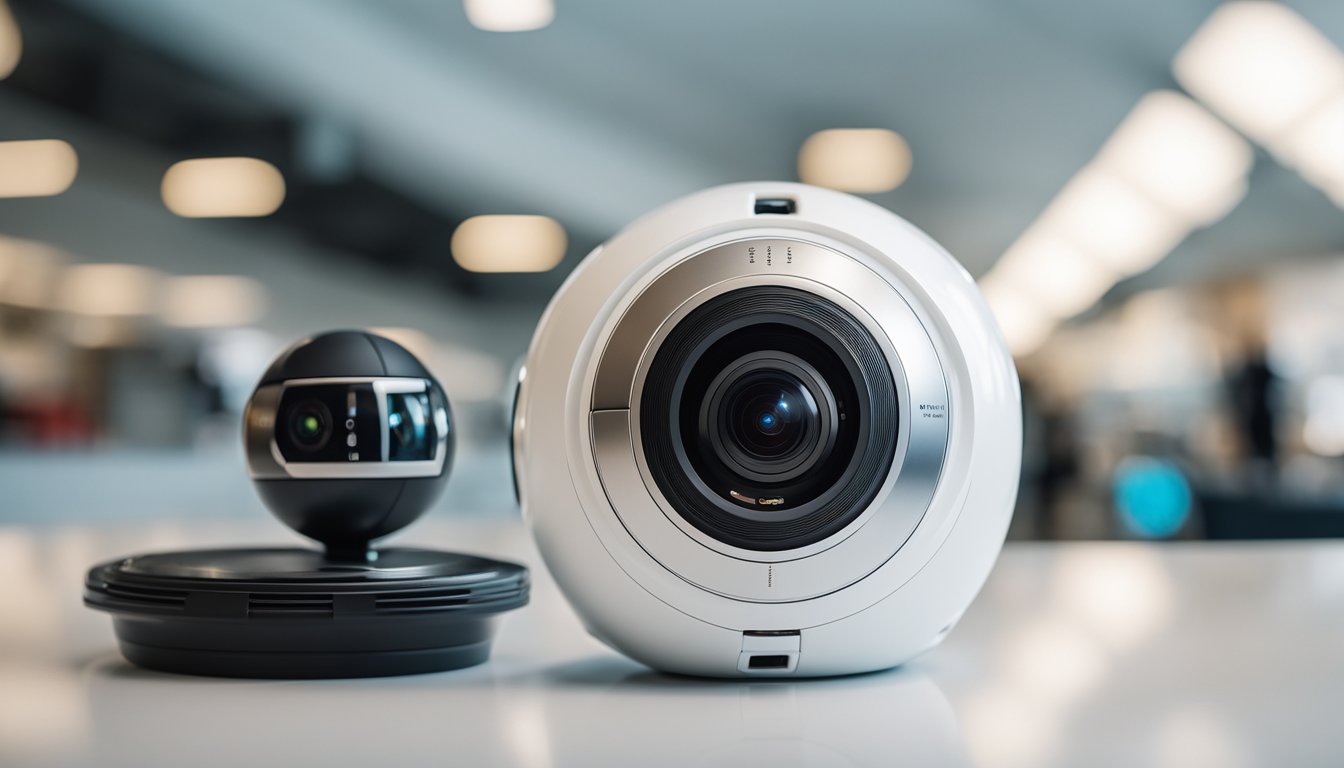If you’re interested in capturing immersive, 360-degree photos and videos, you might be wondering how much a 360-degree camera costs. The answer depends on a variety of factors, including the camera’s features, image quality, and brand. In general, 360-degree cameras are more expensive than traditional cameras, but there are options available at a range of price points to fit different budgets.
When shopping for a 360-degree camera, it’s important to understand the key features and specs to look for, as well as the different use cases for these cameras. Some popular 360-degree camera models include the GoPro Max, Insta360 One X2, and Ricoh Theta Z1. These cameras offer high-quality image and video capture, as well as a range of advanced features like live streaming, waterproofing, and built-in stabilization.
Key Takeaways
- The cost of a 360-degree camera varies based on features, image quality, and brand.
- Popular 360-degree camera models include the GoPro Max, Insta360 One X2, and Ricoh Theta Z1.
- When shopping for a 360-degree camera, it’s important to consider your needs and budget, as well as the camera’s features and specs.
Understanding 360 Degree Cameras
https://www.youtube.com/watch?v=WtAiEeZiYfs&embed=true
If you’re new to the world of 360-degree imaging, you may be wondering what exactly a 360 camera is, how it works, and what benefits it offers. In this section, we’ll provide an overview of these topics to help you better understand the technology behind 360-degree cameras.
What is a 360 Camera?
A 360 camera is a device that captures images and videos in a 360-degree field of view. This means that the camera can capture everything around it, providing an immersive and interactive experience for viewers. 360 cameras typically have two or more lenses that work together to capture the entire scene.
How 360 Cameras Work
360 cameras work by using multiple lenses to capture images or video from different angles. These images or video are then stitched together to create a 360-degree view of the scene. This process is typically done automatically by the camera’s software, making it easy for users to create immersive content without any specialized knowledge or skills.

Benefits of 360 Degree Imaging
The main benefit of 360-degree imaging is that it provides an immersive and interactive experience for viewers. This makes it ideal for a variety of applications, such as virtual reality, real estate, and tourism. 360-degree imaging can also be used to create stunning stills and videos that capture the entire scene, rather than just a small portion of it.
Overall, 360-degree cameras are a powerful tool for creating immersive content that engages viewers and provides a unique perspective on the world around us. Whether you’re a professional photographer or just looking to capture your next adventure, a 360 camera is a great investment that can help you create stunning and immersive content.
Key Features to Consider
When buying a 360-degree camera, there are several key features that you should consider to ensure that you get the best value for your money. Here are some of the most important features to look for:
Resolution and Image Quality
The resolution of a 360-degree camera determines the level of detail in your photos and videos. Higher resolution cameras produce sharper and more detailed images. However, higher resolution cameras also tend to be more expensive. If you’re looking for a budget-friendly option, consider a camera with a lower resolution.
Camera Lenses and Sensors
« DIY 360 Degree Camera: A Step-by-Step Guide
How Much Does a 360 Camera Cost? – A Comprehensive Guide to 360 Camera Pricing »
The lenses and sensors of a 360-degree camera are important factors that affect the quality of your photos and videos. Look for cameras with high-quality lenses and sensors to ensure that you get the best possible image quality. Some cameras even have multiple lenses and sensors to capture more detailed images.
Stabilization Technology
Stabilization technology is another important feature to consider when buying a 360-degree camera. This technology helps to reduce camera shake and produce smoother, more stable footage. Look for cameras with built-in stabilization technology to ensure that your videos are smooth and professional-looking.
Other features to consider include dynamic range, low light performance, and battery life. Keep in mind that the more features a camera has, the more expensive it tends to be. Consider your budget and your specific needs when choosing a 360-degree camera.
Popular 360 Camera Models
If you are looking to buy a 360 camera, you may be wondering which models are the most popular and how much they cost. Here are some of the most popular 360 camera models and their prices:
GoPro 360 Cameras
GoPro is a well-known brand in the action camera industry, and they offer a range of 360 cameras. The GoPro Max is their latest 360 camera, and it costs around $499.99. It can shoot 5.6K video and has features like HyperSmooth stabilization and TimeWarp. If you’re looking for a more affordable option, you can consider the GoPro Fusion, which costs around $299.99. It can shoot 5.2K video and has features like OverCapture and TimeShift.
Insta360 Camera Lineup
Insta360 is another popular brand in the 360 camera industry. They offer a range of cameras, including the Insta360 X3, Insta360 ONE R, and Insta360 ONE X2. The Insta360 X3 costs around $399.99 and can shoot 5.7K video. It has features like FlowState stabilization and a 360-degree audio system. The Insta360 ONE R is a modular camera that allows you to swap out different modules, like a 360 module or a 4K wide-angle module. It starts at around $299.99. The Insta360 ONE X2 costs around $429.99 and can shoot 5.7K video. It has features like FlowState stabilization and a 360-degree audio system.
Ricoh Theta Series
Ricoh is another well-known brand in the 360 camera industry, and they offer a range of cameras in their Theta series. The Ricoh Theta SC2 costs around $299.99 and can shoot 4K video. It has features like 360-degree spatial audio and a slim, pocketable design. The Ricoh Theta X costs around $399.99 and can shoot 4K video. It has features like 360-degree spatial audio and a high-speed data transfer rate. The Ricoh Theta Z1 is their flagship 360 camera and costs around $999.99. It can shoot 23MP stills and 4K video. It has features like 360-degree spatial audio and a large image sensor.
Overall, there are many popular 360 camera models available in the market, and their prices can vary depending on their features and specifications. It is important to research and compare different models before making a purchase to ensure that you get the best value for your money.
360 Camera Use Cases
If you’re considering purchasing a 360 camera, you might be wondering what you can use it for. Here are some of the most common use cases for 360 cameras.
Virtual Tours and Real Estate
360 cameras are perfect for creating virtual tours of real estate properties. Whether you’re a real estate agent trying to sell a property or a homeowner trying to create a virtual tour of your home, a 360 camera can help you create an immersive experience for potential buyers. You can create a virtual tour of the entire property, including the exterior and interior, and allow viewers to explore the space as if they were there in person.
Action Sports and Adventure
If you’re an action or extreme sports enthusiast, a 360 camera can help you capture all the action from every angle. You can mount the camera on your helmet, bike, or other equipment to capture stunning footage of your adventures. Whether you’re skiing down a mountain or surfing in the ocean, a 360 camera can help you capture every moment in stunning detail.
Commercial and Creative Projects
360 cameras can also be used for commercial and creative projects. For example, you can use a 360 camera to create immersive marketing materials for your business. You can create a 360-degree video of your office, store, or restaurant to give potential customers a virtual tour of your space. You can also use a 360 camera to create unique and creative content for social media or other platforms.
Overall, 360 cameras are incredibly versatile and can be used for a wide range of purposes. Whether you’re a real estate agent, an action sports enthusiast, or a creative professional, a 360 camera can help you capture stunning footage from every angle.
Software and Editing
https://www.youtube.com/watch?v=HdvFlaZLk24&embed=true
Editing 360 Videos and Images
Editing 360-degree videos and images requires specialized software that can handle the unique properties of the format. The good news is that there are many software options available for both Windows and iOS. Some of the most popular software for editing 360-degree content includes Adobe Premiere Pro, Final Cut Pro, and CyberLink PowerDirector.
When editing 360 videos, you will need to slice your footage into different segments and stitch them together to create a seamless 360-degree video. This process requires a lot of processing power, so make sure your computer meets the minimum system requirements for the software you choose.
Software Compatibility
When choosing editing software for your 360-degree content, make sure it is compatible with your camera. Some cameras come with their own editing software, while others may require third-party software.
It’s also important to consider the output format of your 360-degree content. Some software options may be better suited for creating 3D VR content, while others may be better for creating flat 360-degree videos. Make sure to choose software that meets your specific needs.
In conclusion, editing 360-degree videos and images requires specialized software that can handle the unique properties of the format. Make sure to choose software that is compatible with your camera and meets your specific needs.
Price Ranges and Budgeting
If you’re interested in purchasing a 360-degree camera, you may be wondering how much you should budget for one. The cost of these cameras can vary widely depending on the features and quality you’re looking for. In this section, we’ll break down the different price ranges and what you can expect to get for your money.
Entry-Level 360 Cameras
If you’re on a tight budget, an entry-level 360 camera may be a good choice for you. These cameras typically provide basic 360-degree imaging capabilities with lower resolution sensors and limited advanced features. While they may not offer the highest image quality or stabilization, they still allow users to experience the magic of 360-degree content creation.
Entry-level 360 cameras can cost as little as $100 to $200, making them an affordable option for those just starting out with 360-degree photography. Some of the best budget 360 cameras include the Ricoh Theta SC2 and the Insta360 One X2.
Mid-Range Options
For those looking for more advanced features and higher-quality imaging, mid-range 360 cameras may be a better choice. These cameras typically offer higher resolution sensors, better image stabilization, and more advanced features like live streaming and 360-degree audio.
Mid-range 360 cameras can cost between $300 to $600. Some of the top picks in this price range include the GoPro Max and the Insta360 One R.
Professional-Grade Cameras
If you’re a professional photographer or videographer, you may need a high-end 360-degree camera with the best possible image quality and advanced features. These cameras can cost several thousand dollars and are typically used for commercial or industrial applications.
Professional-grade 360 cameras can cost anywhere from $1,000 to $10,000 or more. Some of the best choices in this category include the Insta360 Titan and the Kandao Obsidian R.
When choosing a 360-degree camera, it’s important to consider your budget, the features you need, and the quality of the images you want to capture. By doing your research and comparing different models, you can find a camera that fits your needs and your budget.
Additional Equipment and Accessories
When purchasing a 360-degree camera, you may also want to consider investing in additional equipment and accessories to enhance your shooting experience. Here are some items you may want to consider:
Tripods and Mounting Options
A tripod can be a great investment for steady shots and time-lapse videos. Many 360-degree cameras come with a standard tripod mount, but you may need to purchase a separate adapter to use with certain models. Additionally, some cameras may have unique mounting options, such as a suction cup or magnetic mount, which can be useful for capturing footage in unconventional locations.
Memory and Storage
To store your 360-degree footage, you will need a high-capacity microSD card. The amount of storage you need will depend on the resolution and frame rate of your camera, as well as the length of your videos. Make sure to choose a card with a fast write speed to ensure smooth recording. You may also want to consider investing in an external hard drive to back up your footage.
Protective Gear and Durable Builds
If you plan on taking your 360-degree camera on outdoor adventures, you may want to invest in protective gear such as a dive case or a waterproof housing. Some cameras are designed to be water-resistant or even waterproof out of the box, but others may require additional protection. Additionally, look for cameras with durable builds that can withstand bumps and drops.
Overall, additional equipment and accessories can help you get the most out of your 360-degree camera. Consider your shooting needs and preferences to determine which items are right for you.
Camera Connectivity and Sharing
https://www.youtube.com/watch?v=B6X6bwQTTMg&embed=true
When it comes to 360 cameras, connectivity and sharing features are crucial. Most 360 cameras come with Wi-Fi and mobile app integration, which allows you to connect your camera to your smartphone or tablet wirelessly. This is a great feature because it allows you to control the camera remotely, view and transfer your photos and videos, and even adjust camera settings.
Wi-Fi and Mobile App Integration
With Wi-Fi and mobile app integration, you can easily share your 360 photos and videos on social media platforms such as Facebook, Instagram, and Twitter. You can also upload your content to cloud storage services like Google Drive and Dropbox. Some cameras even come with their own mobile apps, which offer additional features such as editing tools, filters, and special effects.
Live Streaming Capabilities
If you’re interested in live streaming your 360 videos, some cameras come with built-in live streaming capabilities. This feature allows you to stream your content directly to platforms like YouTube and Facebook Live. However, keep in mind that live streaming can be resource-intensive and may require a stable internet connection.
Sharing on Social Platforms
Sharing your 360 photos and videos on social platforms is easy and fun. Most social media platforms now support 360 content, allowing you to share your experiences with your friends and followers. You can also join 360 photography and videography communities on social media platforms to connect with other enthusiasts and share your work.
Overall, the connectivity and sharing features of 360 cameras make them a great tool for capturing and sharing your experiences with others. With Wi-Fi and mobile app integration, live streaming capabilities, and social media sharing, you can easily share your 360 content with the world.
Choosing the Right 360 Camera for You
https://www.youtube.com/watch?v=5MvtlBYOFHg&embed=true
When it comes to choosing a 360 camera, there are a lot of choices out there. To make sure you get the best camera for your needs, you should consider a few factors like assessing your needs, comparing models and features, and making the final decision.
Assessing Your Needs
Before you start looking for a 360 camera, you should assess your needs. Think about what kind of videos or photos you want to capture, and from what perspective. If you want to capture action shots, you might need a camera with good stabilization. If you want to capture high-quality 360 photos, you might want to look for a camera with a high megapixel count.
Comparing Models and Features
Once you have an idea of what you need, it’s time to start comparing models and features. Look for cameras that have the features you need, like high resolution or good stabilization. You should also consider the price of the camera, as 360 cameras can range from a few hundred dollars to several thousand dollars.
Here is a table comparing some popular 360 cameras and their features:
| Camera | Price | Resolution | Stabilization | Waterproof |
|---|---|---|---|---|
| Insta360 One X2 | $429 | 5.7K | Yes | Yes |
| GoPro MAX | $499 | 5.6K | Yes | Yes |
| Kandao QooCam 8K | $599 | 8K | No | No |
| Ricoh Theta Z1 | $999 | 7K | Yes | No |
| Insta360 Pro 2 | $4999 | 8K | Yes | No |
Making the Final Decision
Once you’ve compared models and features, it’s time to make the final decision. Consider your budget and the features that are most important to you. Don’t forget to read reviews and watch sample footage to get a better idea of each camera’s capabilities.
In summary, when choosing a 360 camera, look for a camera that meets your needs, compare models and features, and make the final decision based on your budget and the features that are most important to you.
Future of 360 Degree Cameras
https://www.youtube.com/watch?v=0hon8QSbs5I&embed=true
Technological Advances
The future of 360 degree cameras looks bright with the rapid pace of technological advancements. With the progress in technology, 360-degree cameras are becoming more versatile, compact, and affordable. The new 360-degree cameras are equipped with 3D technology and 8K resolution that provide a more immersive experience. Some of the latest 360-degree cameras come with 4K boost lenses that capture every detail with precision. The spec sheet of these cameras is impressive, with high-quality sensors, image stabilization, and advanced software that allow for better post-processing.
Trends in 360 Degree Photography
The modular design of 360-degree cameras is becoming increasingly popular, allowing for more versatility in capturing images and videos. The modular design means that you can add or remove components to customize your camera according to your needs. This trend is particularly useful for professionals who require specific features for their work.
Another trend in 360-degree photography is the use of drones. Drones equipped with 360-degree cameras can capture stunning aerial footage that was not possible before. This trend is particularly useful for capturing landscapes, cityscapes, and other wide-angle shots.
In conclusion, the future of 360-degree cameras looks promising with the advancements in technology and the latest trends in photography. With the modular design and high-quality sensors, 360-degree cameras are becoming more versatile and user-friendly. The use of drones equipped with 360-degree cameras is also a trend to look out for.
Frequently Asked Questions
What’s the price range for entry-level 360-degree cameras?
Entry-level 360-degree cameras are generally priced between $100 to $300. These cameras are ideal for beginners and casual users who want to experiment with 360-degree photography and videography. Some popular entry-level 360-degree cameras include the Insta360 Go 2, Ricoh Theta SC2, and the Vuze XR.
How much should I expect to spend on a professional-grade 360 camera?
Professional-grade 360-degree cameras are more expensive and can cost anywhere between $1000 to $5000. These cameras are designed for professional photographers and videographers who need high-quality footage for commercial purposes. Some popular professional-grade 360-degree cameras include the Insta360 Pro 2, GoPro MAX, and the Kandao Obsidian.
Are there affordable options for 360 cameras suitable for party events?
Yes, there are affordable 360-degree cameras that are ideal for party events. These cameras are generally priced between $200 to $500 and offer good image and video quality. Some popular options include the Ricoh Theta V, the Insta360 ONE R, and the GoPro Fusion.
What is the cost of adding a 360-degree camera setup to my vehicle?
The cost of adding a 360-degree camera setup to your vehicle can vary depending on the type of camera and the installation process. On average, you can expect to spend between $500 to $1500 for a basic setup. However, if you want a more advanced setup with multiple cameras and high-end features, the cost can go up to $5000 or more.
Can I find a good 360 camera for real estate photography within a modest budget?
Yes, you can find good 360-degree cameras for real estate photography within a modest budget. Entry-level 360-degree cameras like the Ricoh Theta SC2 and the Insta360 ONE X2 offer good image quality and are priced between $300 to $500. However, if you want more advanced features like 8K video and better low-light performance, you may need to invest in a more expensive camera.
What are the ongoing costs associated with maintaining a 360 camera booth?
The ongoing costs associated with maintaining a 360 camera booth can vary depending on the type of camera and the setup. You may need to invest in additional equipment like tripods, lighting, and editing software. Additionally, you may need to pay for storage and hosting services to store and share your 360-degree content. On average, you can expect to spend between $100 to $500 per month on maintenance costs.

